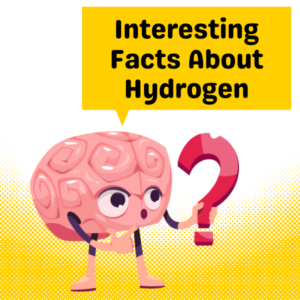Fluorine, a highly reactive chemical element, is known for its fascinating properties and wide range of applications. In this article, we will explore some intriguing facts about fluorine that will surely pique your interest.
From its discovery to its role in various industries, let’s learn some interesting facts about this remarkable element.
One of the most remarkable facts about fluorine is its position as the most electronegative element on the periodic table.
This means that fluorine has a strong attraction for electrons, making it highly reactive and capable of forming compounds with almost all other elements. Its electronegativity also contributes to its unique ability to stabilize and strengthen chemical bonds.
Interesting Facts About Fluorine
1. The most electronegative element in the periodic table
Fluorine holds the title for being the most electronegative element, meaning it has a strong attraction for electrons.
2. A key component in toothpaste
Fluorine is commonly added to toothpaste in the form of fluoride, which helps prevent tooth decay and strengthens enamel.
3. Highly reactive and corrosive
Due to its high reactivity, fluorine can react with almost all elements, including noble gases, and is highly corrosive to many materials.
4. Used in the production of uranium
Fluorine is used in the production of uranium hexafluoride, a compound used in the enrichment of uranium for nuclear reactors and weapons.
5. Forms compounds with almost all elements
Fluorine has the ability to form compounds with almost all elements, except for a few noble gases and some rare earth metals.
6. Plays a role in the ozone layer depletion
Chlorofluorocarbons (CFCs), which contain fluorine, were once widely used in aerosol propellants and refrigerants, contributing to ozone layer depletion.
7. Used in the production of Teflon
Fluorine is a key component in the production of Teflon, a nonstick coating used in cookware and various industrial applications.
8. Can react explosively with water
When fluorine comes into contact with water, it can react explosively, releasing hydrogen fluoride gas and potentially causing severe burns.
9. Found in minerals and natural compounds
Fluorine is found in various minerals and natural compounds, such as fluorite, cryolite, and fluorspar, which are used in the production of aluminum and steel.
10. Used in the production of fluorocarbon gases
Fluorine is used in the production of fluorocarbon gases, which are used as refrigerants, propellants, and solvents in various industries.
11. Can react with noble gases
Unlike most other elements, fluorine can react with noble gases, such as xenon, forming compounds with unique properties.
12. Highly toxic and dangerous to handle
Fluorine gas is highly toxic and can cause severe burns and respiratory damage. It requires special precautions and equipment for handling.
13. Used in the production of high-energy rocket fuels
Fluorine compounds, such as fluorine-oxygen mixtures, are used in the production of high-energy rocket fuels, providing powerful propulsion.
14. Can displace oxygen in the human body
Fluorine gas can displace oxygen in the human body, leading to asphyxiation and potentially fatal consequences.
15. Used in the production of semiconductors
Fluorine is used in the production of semiconductors, playing a crucial role in the manufacturing of electronic devices.
16. Can react with glass
Fluorine gas can react with glass, causing it to etch and corrode. Special glass materials, such as Teflon-lined glass, are used to handle fluorine.
17. Forms strong bonds with carbon
Fluorine forms strong bonds with carbon, leading to the creation of highly stable and heat-resistant compounds, such as polytetrafluoroethylene (PTFE).
18. Used in the production of uranium fuel for nuclear power plants
Fluorine is used in the production of uranium fuel for nuclear power plants, enabling the generation of electricity through nuclear fission.
19. Can react with nitrogen
Fluorine can react with nitrogen, forming compounds known as nitrogen fluorides, which are used in various chemical reactions and industrial processes.
20. Found in the Earth’s crust
Although fluorine is not found in its elemental form in nature, it is present in the Earth’s crust as fluoride compounds, making it a naturally occurring element.
Related: Interesting Facts About Fluorite
Fun Facts About Fluorine for Students and Kids
1. The most reactive element in the periodic table
Fluorine is the most reactive element, meaning it easily forms compounds with other elements.
2. Found in toothpaste and water
Fluorine compounds like fluoride are added to toothpaste and water to help prevent tooth decay.
3. Used in non-stick pans
Fluoropolymers, derived from fluorine, are used to create non-stick coatings on pans.
4. Can dissolve glass
Fluorine is so reactive that it can dissolve glass, making it one of the few elements that can do so.
5. Found in some medications
Fluorine is used in certain medications, such as antidepressants and anesthetics, to enhance their effectiveness.
6. Creates colorful light bulbs
Fluorine gas is used in some types of light bulbs to produce a bright, white light.
7. Found in minerals and rocks
Fluorine can be found in various minerals and rocks, including fluorite and topaz.
8. Used in rocket propellants
Fluorine compounds are used in rocket propellants due to their high reactivity and ability to release large amounts of energy.
9. Can react with noble gases
Fluorine is one of the few elements that can react with noble gases, which are typically unreactive.
10. Can be lethal in high concentrations
While fluorine is essential in small amounts, high concentrations can be toxic and even lethal.
11. Discovered by a chemist in 1886
Fluorine was discovered by a French chemist named Henri Moissan in 1886.
Related: Interesting Facts About Nitrogen
Most Common Uses of Fluorine
Dental Care
Fluorine is widely used in dental care due to its ability to prevent tooth decay. It is added to toothpaste, mouthwashes, and dental treatments to strengthen tooth enamel and make it more resistant to acid attacks from bacteria and plaque.
Regular use of fluorine-based dental products helps in maintaining good oral hygiene and preventing cavities.
Water Fluoridation
Fluorine is added to public water supplies in many countries as a preventive measure against tooth decay.
This process, known as water fluoridation, involves adjusting the fluoride concentration to an optimal level that provides dental benefits without causing any adverse health effects. Water fluoridation has proven to be a cost-effective and efficient way to improve oral health in communities.
Chemical Manufacturing
Fluorine is widely used in the chemical industry for various manufacturing processes. It is a key component in the production of many important chemicals, such as hydrofluoric acid, fluorocarbons, and fluoropolymers.
These chemicals find applications in diverse industries, including pharmaceuticals, electronics, plastics, and refrigeration.
Aluminum Production
Fluorine plays a crucial role in the production of aluminum. It is used as a flux in the electrolytic reduction of alumina (aluminum oxide) to extract pure aluminum. The addition of fluorine helps lower the melting point of alumina, allowing for more efficient and cost-effective aluminum production.
Fluorine Gas as a Rocket Propellant
Fluorine gas, due to its high reactivity and strong oxidizing properties, has been used as a rocket propellant in certain applications. It can react vigorously with various fuels, such as hydrogen, to produce high-energy combustion reactions.
However, the use of fluorine gas as a rocket propellant is limited due to its hazardous nature and the challenges associated with its storage and handling.
Electronics and Semiconductor Industry
Fluorine compounds are widely used in the electronics and semiconductor industry. They are utilized in the production of integrated circuits, flat-panel displays, and other electronic components.
Fluorine-based gases, such as sulfur hexafluoride, are used as insulating and cooling agents in electrical equipment and power systems.
Fluorine in Pharmaceuticals
Fluorine is often incorporated into pharmaceutical compounds to enhance their stability, bioavailability, and therapeutic properties.
The introduction of fluorine atoms can improve the drug’s metabolic stability, increase its resistance to degradation, and enhance its binding affinity to target receptors. This has led to the development of numerous fluorine-containing drugs used in various medical treatments.
Chemistry of Fluorine
Fluorine is a highly reactive chemical element that belongs to the halogen group on the periodic table. It is the lightest and most electronegative element, making it extremely reactive and capable of forming compounds with almost all other elements.
The chemistry of fluorine is fascinating and has played a significant role in various scientific and industrial applications.
Discovery
Fluorine was first discovered in 1886 by the French chemist Henri Moissan. He isolated the element by electrolyzing a mixture of potassium fluoride and hydrogen fluoride, using a platinum wire as the cathode.
Moissan’s discovery of fluorine was a significant breakthrough in the field of chemistry, as it was the last of the naturally occurring elements to be discovered.
History
The history of fluorine dates back to ancient times when it was used in the form of fluorite, a mineral that contains calcium fluoride. However, it was not until the 19th century that scientists began to understand the true nature of fluorine and its compounds.
The study of fluorine’s chemistry progressed rapidly in the early 20th century, leading to the development of various applications in industry and medicine.
Basic Chemistry
Fluorine is a highly reactive nonmetal that readily forms compounds with other elements. It has a unique ability to attract electrons, making it the most electronegative element on the periodic table.
This property allows fluorine to form strong bonds with other elements, resulting in stable compounds. Fluorine compounds, known as fluorides, are widely used in various industries, including pharmaceuticals, electronics, and metallurgy.
Fluorine gas (F2) is a pale yellow-green gas that is highly toxic and corrosive. It is stored and transported in specialized containers due to its reactivity.
Fluorine readily reacts with almost all elements, except for a few noble gases and some other highly unreactive substances. This reactivity is due to fluorine’s strong desire to gain an electron and achieve a stable electron configuration.
Interesting Physical Properties of Fluorine
1. Low boiling point
Fluorine has a very low boiling point of -188.12°C (-306.62°F). This makes it the lightest halogen and the most reactive element. Its low boiling point allows it to exist as a gas at room temperature, forming a pale yellow diatomic molecule.
2. High electronegativity
Fluorine has the highest electronegativity of all elements, with a value of 3.98 on the Pauling scale. This means that fluorine has a strong attraction for electrons, making it highly reactive and capable of forming strong bonds with other elements. Its high electronegativity also contributes to its role as a powerful oxidizing agent.
3. Pale yellow color
Fluorine gas has a pale yellow color, which is visible when it is in its gaseous state. This color is due to the absorption and emission of light at specific wavelengths by the fluorine molecules. The pale yellow color is a characteristic property of fluorine and helps in its identification.
4. Strong oxidizing agent
Fluorine is a highly effective oxidizing agent, meaning it readily accepts electrons from other substances during chemical reactions. It has a strong tendency to gain electrons and become negatively charged.
This property makes fluorine useful in various industrial applications, such as in the production of uranium hexafluoride for nuclear fuel.
5. Low density
Fluorine gas has a low density of 1.7 grams per liter at standard temperature and pressure. This low density allows fluorine to easily displace air and rise upwards. It is lighter than air, making it useful in applications where its low density is advantageous, such as in filling balloons or as a lifting gas.


